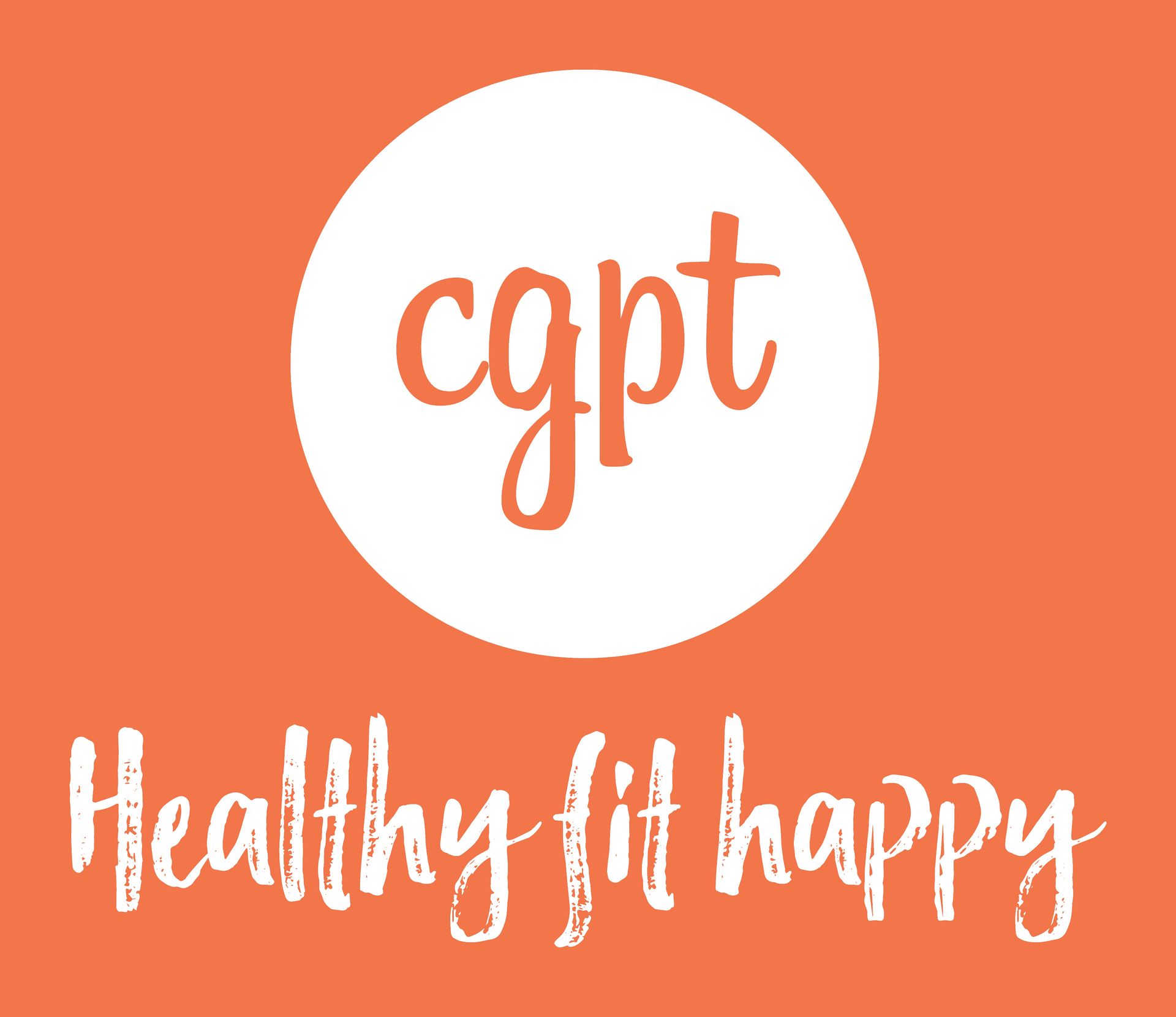
Strong Starts Here: How CGPT Helps Women Prepare for Pregnancy with Confidence Preparing your body for pregnancy is about more than nutrition and timing - it’s about building the strength, stability, and energy to support a growing body and an evolving life. At CGPT in Hawthorn, we help women at every stage of the fertility journey feel physically prepared, confident, and strong. Whether you’re planning to conceive soon or simply want to create a healthier foundation for the future, our private gym and experienced trainers offer the guidance and support you need to train safely and effectively. Why Strength Training Before Pregnancy is Important Pregnancy is one of the most physically demanding experiences the body can go through. The right preparation makes a world of difference. Research from the University of Queensland (Davenport et al., 2019) found that women who entered pregnancy with better strength and conditioning experienced fewer musculoskeletal issues, improved energy, and faster postpartum recovery. Strength training before conception isn’t about pushing limits - it’s about developing a balanced, stable body capable of handling change. By strengthening the core, glutes, and back, you’re giving yourself the support system needed for pregnancy and beyond. At CGPT, our focus is on functional movement - training that improves how you feel and move in everyday life. We design each program around your current fitness level, goals, and comfort, ensuring you’re always working within safe and sustainable boundaries. A Private and Supportive Environment CGPT isn’t a typical big box gym. Our private gym in Hawthorn provides a calm, welcoming space free from distractions and crowds. Every client trains in a one-on-one or small private setting, giving you the confidence to focus fully on your body and your goals. We work with women of all ages, backgrounds, and fitness levels - from those just beginning their fitness journey to those with established training experience. Our environment is inclusive, respectful, and designed to make every session feel comfortable and achievable. For women preparing for pregnancy, that privacy and personalisation make all the difference. You’ll never be left wondering if you’re doing the right exercise or pushing too hard - every session is guided, safe, and structured for your unique stage of life. Expert Trainers Who Understand Women’s Health The CGPT trainer team brings a wealth of experience in strength training, movement correction, and women’s health. Each program is evidence-based, drawing from current research on hormonal health, pelvic stability, and injury prevention. Our trainers collaborate closely with clients to help them: · Build the core and glute strength that supports a growing belly. · Improve posture and balance for long-term comfort. · Reduce back and hip tension before it becomes an issue. · Feel more energised and confident leading into pregnancy. We also understand the emotional and mental side of the process. Pre-pregnancy can be a hopeful but uncertain time - training at CGPT offers a sense of routine, calm, and empowerment that supports not just your body but your overall wellbeing. Safe, Smart, and Science-Based Strength training before pregnancy is safe and highly beneficial when done correctly. Studies from Monash University (Smith et al., 2020) and the Australian Institute of Sport (2022) confirm that resistance training supports hormonal balance, improves bone density, and reduces chronic inflammation - all factors linked to reproductive health. Our approach focuses on progression, not perfection. You’ll build strength gradually, develop stability through movement, and feel your confidence grow with each session. And because our programs are tailored around you, we can easily adapt your training as your needs evolve - before, during, or after pregnancy. Why Women Choose CGPT Women choose CGPT because it’s a space where they feel seen, supported, and genuinely cared for. Every detail of the experience - from the welcoming environment to the one-on-one coaching - is designed to help you feel empowered in your own skin. Here’s what sets us apart: · Private setting: No crowds, no waiting, no distractions. · Personalised programs: Tailored specifically to your stage of life and fitness level. · Experienced trainers: Specialists in strength training, pre- and post-natal care, and safe exercise progression. · Inclusive culture: We welcome women of all ages, abilities, and backgrounds. Yes, it’s about getting stronger but it’s also about feeling genuinely ready for whatever comes next. Begin Your Journey with Confidence If you’re thinking about starting a family soon, now is the perfect time to invest in your strength. Training at CGPT gives you the tools to support your body through pregnancy, recovery, and motherhood with confidence. Our team is here to guide you every step of the way - with knowledge, compassion, and a focus on long-term health. Email Andrea today at andrea@chrisgympt.com to start your pre-pregnancy strength program. Because when it comes to preparing for pregnancy, building strength is one of the most powerful things you can do - for yourself, and for the life you’re creating.

Countdown to ‘I Do’: Your Month-by-Month Strength Training Plan for the Big Day If you’re counting down to your wedding, you already know the to-do list is endless - dress fittings, venue visits, catering tastings, and seating charts. With so much to organise, it’s easy to let your own health and fitness take a back seat. But the truth is, feeling strong, confident, and energised on your wedding day is one of the best gifts you can give yourself. Strength training is more than just “getting in shape.” It supports posture, helps manage stress, boosts confidence, and gives you the stamina to enjoy every moment - from the walk down the aisle to the last dance at the reception. At CGPT in Hawthorn, we’ve designed a framework that works seamlessly alongside wedding prep, with a private and personalised approach to training that takes the stress out of fitness. Here’s a simple month-by-month guide to help you move toward your big day with strength and confidence. Six Months Out: Build Your Base Six months gives you a generous runway to set strong foundations. This is the time to focus on overall strength, energy, and consistency. Building a solid base now means your body adapts gradually, reducing the risk of injury or burnout later. Think of this stage as creating the “frame” for everything to follow. A focus on big-picture strength gives you the power to carry through the months ahead, whether your goals are building lean muscle, improving posture, or simply feeling more energised. Couples training together at this stage can follow the same rhythm while working toward individual goals, even if fitness levels differ. Three Months Out: Refine and Define With 12 weeks to go, most of the groundwork is in place - now it’s about refining. This stage is perfect for dialling in body composition and highlighting the results of your training. Improved strength and energy levels can also help balance the demands of wedding planning, where stress can easily creep in. For couples, this can be a fun stage to share workouts side by side. Even if one partner wants to lean into aesthetics and the other prefers performance, training together keeps motivation high and makes fitness part of the wedding journey. One Month Out: Posture, Core, and Confidence The last few weeks before your wedding are about polishing the details - much like your final dress fitting or venue walk-through. Posture work, core stability, and mobility are key focuses here. The goal is to stand tall, move with ease, and feel confident in every photo. Strength training also supports your mental health in this stage. Taking an hour for yourself in a private, distraction-free gym like CGPT provides a much-needed break from the endless checklist of wedding tasks. Wedding Week: Stay Calm, Stay Strong The week of your wedding isn’t the time to push harder or start something new. Instead, it’s about maintaining the energy and strength you’ve built while giving your body the space to look and feel its best. Light, confidence-boosting sessions will help reduce stress without leaving you sore or fatigued. And here’s a bonus tip: shorter, makeup-friendly workouts in the final days mean less chance of puffiness, breakouts, or stress-induced skin flare-ups. You’ll walk into your big day fresh, not frazzled. Why CGPT Is the Perfect Fit for Your Wedding Prep Preparing for a wedding is exciting - but it can also feel overwhelming. That’s why so many couples choose CGPT’s private gym in Hawthorn. Unlike generic gym memberships, CGPT offers: Personalised programs that evolve with your timeline and goals. A private environment free from the distractions of busy gym floors. Supportive coaching that makes training a positive, achievable part of your wedding countdown. Whether you’re training solo or as a couple, CGPT helps you move into married life feeling confident, strong, and energised - ready to enjoy every moment of your celebration. The CGPT Experience: More Than Just a Gym One of the biggest challenges people face when preparing for a wedding is finding the right training environment. A crowded commercial gym can feel intimidating, time-wasting, or simply uninspiring. At CGPT, we do things differently. Our private gym in Hawthorn is purpose-built for focus and results. You’ll never have to wait for equipment, compete with blaring music, or feel self-conscious about who’s watching. Instead, every session takes place in a calm, supportive setting where your time is valued and your progress is our priority. We’re proud to welcome clients of all ages and fitness levels. Whether you’re brand new to strength training or you’ve been active for years, our programs are tailored to your ability and goals. It’s not about fitting into a mould - it’s about creating the right path for you. Our Trainers: Knowledgeable, Supportive, and Experienced At the heart of CGPT is our team of dedicated trainers. Each coach brings years of expertise in strength training, injury management, and personalised programming, ensuring your workouts are safe, effective, and enjoyable. What makes our trainers different is their approach: Supportive and encouraging - we meet you where you’re at and help you progress step by step. Highly experienced - with backgrounds spanning physiotherapy, athletic development, and personal training, our knowledge runs deep. Genuinely invested in you - we take the time to understand your lifestyle, energy, and priorities, so training always feels achievable and relevant. Couples love training at CGPT because the atmosphere is welcoming, inclusive, and motivating. It’s the kind of place where you’ll feel comfortable whether you’re preparing for your wedding, building long-term strength, or simply wanting to feel healthier in daily life. Final Thoughts Your wedding day should be one of the most joyful experiences of your life - and that joy is amplified when you feel strong, confident, and comfortable in your own skin. By starting early and following a month-by-month approach, strength training becomes a supportive part of the wedding journey, not an added stress. At CGPT, we’ll help you go beyond “looking good for the big day.” We’ll help you build the strength, energy, and confidence to enjoy every step of the countdown - and every step down the aisle. Email Andrea today at andrea@chrisgympt.com to begin your wedding-ready program. Because lifelong strength begins before you say “I do.”
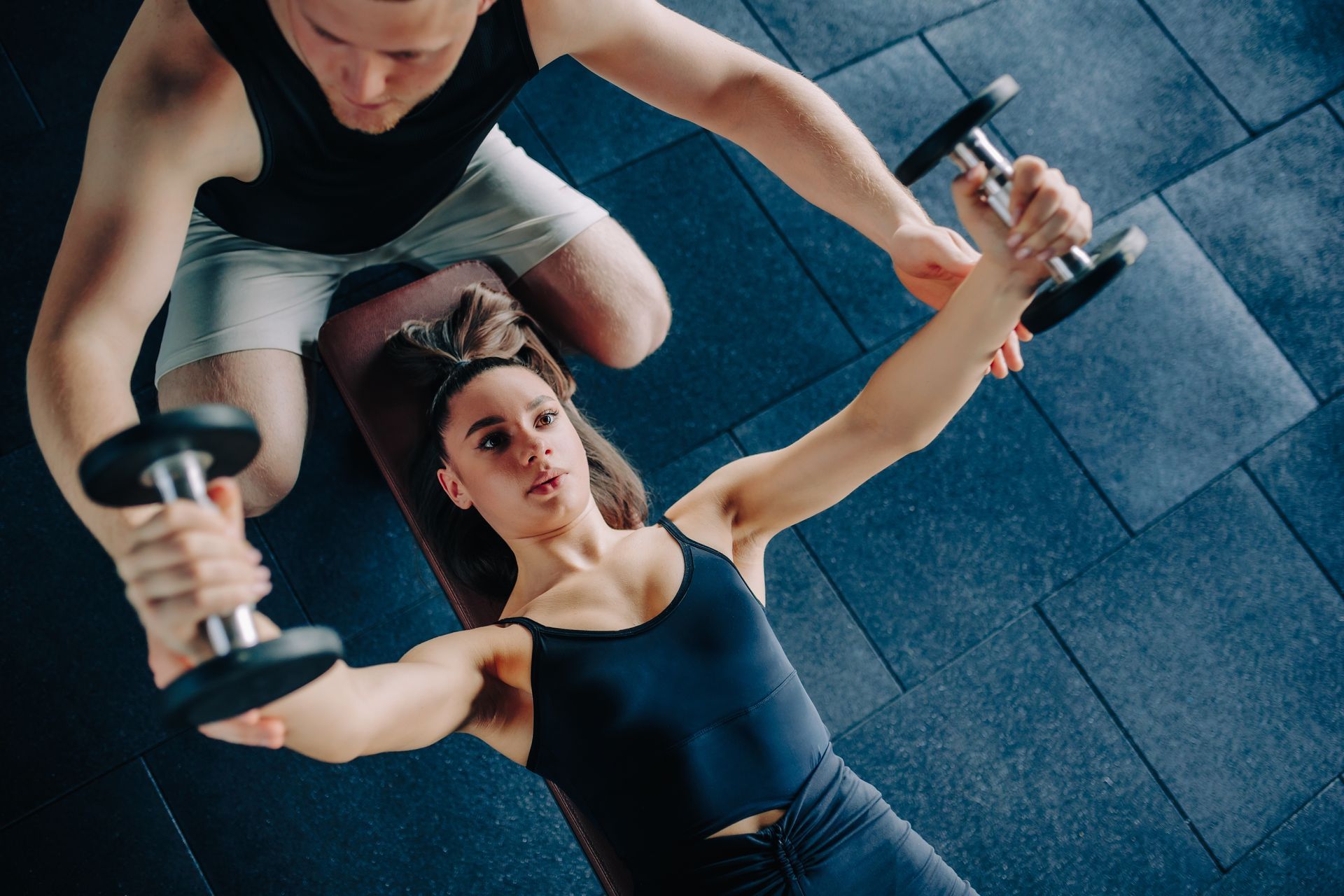
Beyond the Scale: How Strength Training Protects Your Muscle, Metabolism, and Mind on GLP-1 Medications If you’ve read our blog on Strength Training and GLP-1 Medications: A Powerful Combo for Weight Loss Success , you already know that pairing exercise with GLP-1 medications like Ozempic (semaglutide) and Mounjaro (tirzepatide) can deliver life-changing results. But long-term success with GLP-1s isn’t just about the number on the scales. Without a plan to safeguard your strength and energy, weight loss can sometimes come at the expense of muscle, metabolism, and overall wellbeing. At CGPT in Hawthorn, we support clients using GLP-1s with personalised programs designed to protect muscle, maintain energy, and build resilience. Our private environment provides the expertise and accountability that generic gyms can’t, helping you stay strong during and beyond your weight loss journey. Why Maintaining Muscle is Important on GLP-1s GLP-1s work by suppressing appetite and reducing food intake, which makes weight loss possible even when other strategies have failed. However, along with fat loss, some lean muscle can be lost too. Research suggests up to a third of total weight lost may come from lean tissue if no protective steps are taken (Wilding et al. 2021). Losing muscle isn’t just about strength in the gym: Metabolism slows - less muscle means fewer calories burned at rest (Rosenbaum & Leibel 2010). Bone health suffers - strong muscles stimulate stronger bones, protecting against osteoporosis (Kohrt et al. 2004). Everyday function declines - from climbing stairs to enjoying active holidays, muscle is what powers daily life. Energy, Focus and the Fatigue Factor Many GLP-1 users notice dips in energy, especially when their calorie intake is significantly reduced. It’s tempting to skip workouts when you’re feeling flat - but movement often does the opposite of what you expect. Strength training has been shown to: · Improve the body’s ability to produce and use energy efficiently (Holloszy 2008). · Enhance blood sugar management and reduce brain fog (Ivy 1997). · Lift mood, improve focus, and counteract fatigue (Gordon et al. 2017). In other words, the right training doesn’t just burn energy - it creates it. Building for the Future Some people use GLP-1s short term, while others continue long term as part of chronic weight management (Davies et al. 2021). Regardless of the timeframe, strength training is your insurance policy for the future. Protecting and building muscle now means: · A stronger metabolism, so your body continues burning more energy every day. · A buffer against rebound weight gain if medication use changes. · Greater freedom to enjoy the things you love - travel, sport, or simply keeping up with friends and family. Why CGPT Is the Right Partner GLP-1 users need more than a one-size-fits-all gym membership. At CGPT, our trainers understand the unique challenges that come with rapid weight loss and reduced energy intake. We provide: Tailored programs that evolve with you, whether you’re starting your GLP-1 journey or looking ahead. A private environment free from the distractions and crowds of commercial gyms. Supportive coaching that balances challenge with care, ensuring you feel safe and capable every step of the way. Our goal isn’t just to help you lose weight - it’s to help you keep your strength, confidence, and quality of life for years to come. Final Thoughts: Beyond the Scale GLP-1 medications are powerful tools for weight loss. But the real measure of success goes beyond the number you see on the scales. It’s found in the muscle you protect, the energy you regain, and the confidence you build. At CGPT, we’re here to make sure your weight loss journey doesn’t come at the cost of your long-term health. Email Andrea today at andrea@chrisgympt.com to start a program tailored to your GLP-1 journey. Because weight loss may begin with medication, but lifelong health is built with strength. References · Davies, M, et al. 2021, Semaglutide for weight management: a clinical review, Diabetes, Obesity and Metabolism, 23(4), pp. 879-891. · Gordon, BR, et al. 2017, Resistance exercise training improves depressive symptoms in adults: a meta-analysis, JAMA Psychiatry, 75(6), pp. 566-576. · Holloszy, JO 2008, Regulation by exercise of skeletal muscle content of mitochondria and GLUT4, Journal of Physiology, 586(1), pp. 1-6. · Ivy, JL 1997, Role of exercise training in the prevention and treatment of insulin resistance and non-insulin-dependent diabetes mellitus, Sports Medicine, 24(5), pp. 321-336. · Kohrt, WM, et al. 2004, Physical activity and bone health in older men and women, Medicine & Science in Sports & Exercise, 36(11), pp. 1985-1996. · Rosenbaum, M & Leibel, RL 2010, Adaptive thermogenesis in humans, International Journal of Obesity, 34(S1), S47-S55. · Wilding, JPH, et al. 2021, Once-weekly semaglutide in adults with overweight or obesity, The New England Journal of Medicine, 384, pp. 989-1002.
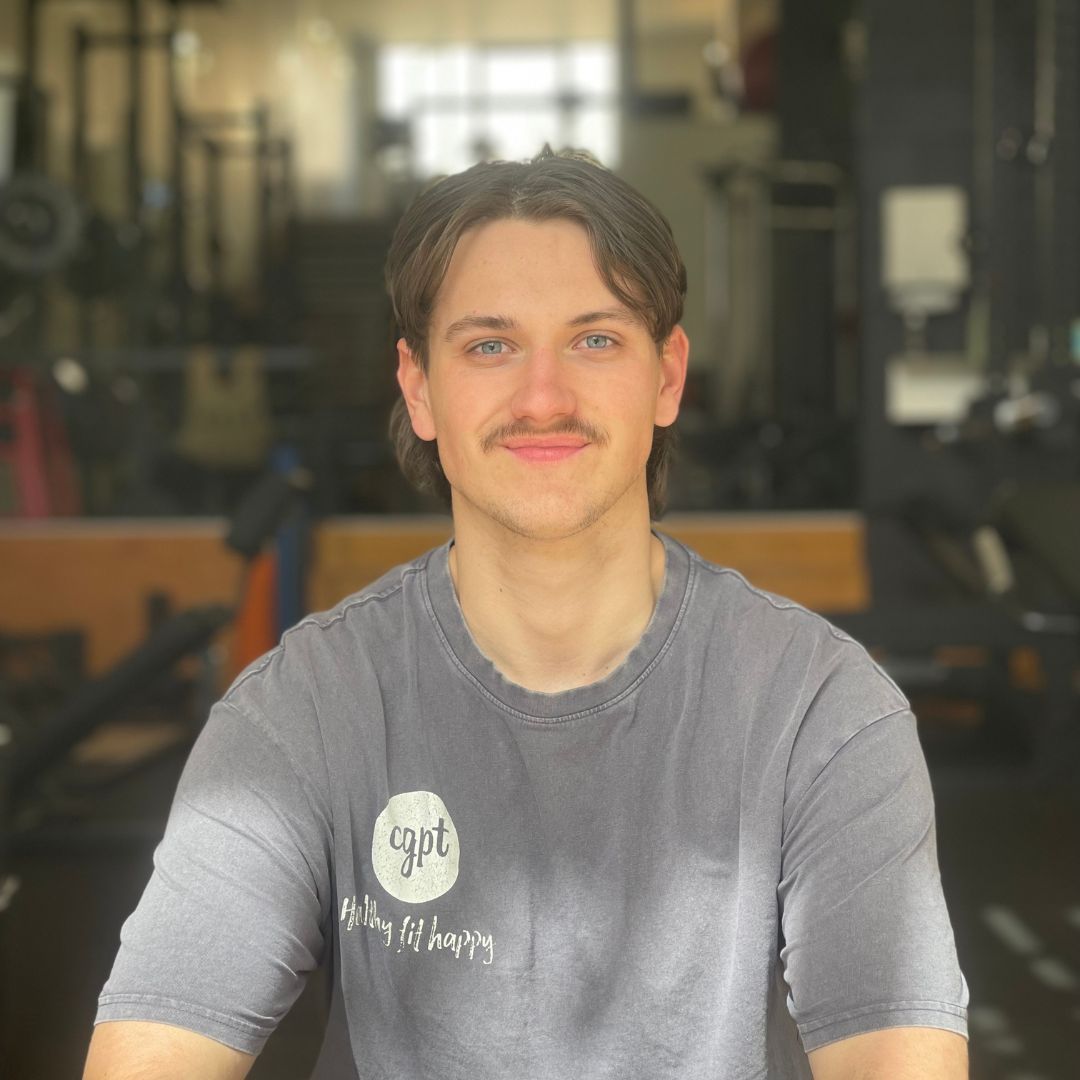
Meet Jamie Hoopmann: The Strong, Athletic, and Resilient Trainer at CGPT At CGPT in Hawthorn, personal trainer Jamie Hoopmann combines elite athletic experience with evidence-based coaching to help clients build strength, move better, and become more resilient. From rowing at a state and national level to coaching youth athletes in AFL, rugby, and rowing, Jamie has seen firsthand how the right training transforms not only performance but also confidence and quality of life. His mission? To bring those same high-performance principles into accessible, personalised programs for every client who trains at CGPT. From Elite Rowing to Coaching Others Jamie’s turning point came during his years as an elite rower. Training at the highest level showed him the profound impact of great coaching and strength and conditioning. “I saw how much difference proper training made, not just for performance but for health and confidence outside of sport,” he explains. That realisation sparked his passion to turn coaching into a career. Today, Jamie is completing a double degree in Exercise & Sport Science and Exercise Physiology while working as a strength and conditioning coach. His background gives him a unique edge: he understands the science behind training but also knows how to apply it in a way that makes sense for both everyday people and athletes. A Training Style Built for Progress Jamie describes his coaching philosophy in three words: Strong. Athletic. Resilient. · Strong: because strength underpins everything, from daily function to athletic performance. · Athletic: because he coaches movement, not just muscles, ensuring clients build balance, agility, and coordination. · Resilient: because life comes with setbacks, and training should prepare people to handle load, stress, and challenges with confidence. Every session with Jamie is tailored, challenging but achievable, and built to create lasting results. “I meet clients where they’re at, explain the ‘why’ behind each movement, and celebrate the small wins that build consistency,” he says. His approachable style ensures every client leaves feeling stronger and more capable. Why Jamie Loves Strength and Power Training Jamie’s favourite type of workout is strength and power training - barbell lifts, explosive movements, and athletic accessory work. “It’s effective because it goes beyond burning calories,” he explains. “It builds strength that carries over into sport and everyday life, improves movement quality, and helps people feel and perform at their best.” Whether it’s an athlete preparing for competition or someone who just wants to feel younger, fitter, and stronger, Jamie’s programming delivers measurable, meaningful results. Transformations That Go Beyond the Gym One of Jamie’s most impactful coaching experiences involved working with a rower who had broken his leg. After months of rebuilding strength, mobility, and confidence, Jamie witnessed him return to the water for the first time. “It wasn’t just physical rehab, it was giving him back the sport and identity he thought he’d lost,” Jamie says. For him, this reinforced the true power of coaching: helping people reclaim not just their fitness, but their confidence and independence. Life Outside the Gym When Jamie isn’t coaching clients at CGPT, he’s usually outdoors, staying active with cycling or running. Movement has always been his reset button, keeping him refreshed and ready to bring energy back into the gym. He also has a hidden passion for 4WDing. Whether it’s mechanical upgrades or planning the next camping trip, Jamie enjoys problem-solving and building systems — the same mindset he applies to helping clients achieve peak performance. Why Train With Jamie at CGPT? If you’re looking for a personal trainer in Hawthorn who blends scientific knowledge, athletic experience, and a supportive coaching style, Jamie Hoopmann is ready to help you reach your next level. His sessions are built to make you stronger, more athletic, and more resilient - whether your goal is improving sports performance, returning from injury, or simply building confidence in everyday life. At CGPT, Jamie empowers clients to move with purpose and discover just how capable they really are. His mantra is simple: “Consistency beats intensity. Stack small wins, keep showing up, and you’ll achieve more than you ever thought possible.”

The High-Performance Edge: How Strength Training Translates to Career Success Executives and professionals are no strangers to performance metrics. You measure results in meetings closed, projects delivered, and strategies executed. But what if the biggest performance enhancer for your career wasn’t found in the boardroom, but in the gym? At CGPT in Hawthorn, we work with many corporate professionals who’ve discovered that strength training isn’t just about building muscle - it’s about building resilience, presence, and stamina that directly translate into success at work. When your body performs better, your career does too. This is how consistent strength training can sharpen your edge in business, from focus and decision-making to confidence and stress management. Strength and Resilience: The Mental ROI of Training High performers know that the difference between success and burnout often lies in mental resilience. Strength training plays a surprisingly powerful role here. · Sharper focus and decision-making – Lifting weights requires concentration, discipline, and progression - skills that carry into high-pressure projects and negotiations. Regular training improves executive function, which is linked to better problem-solving and planning (Erickson et al. 2011). · Energy management – Instead of the 3pm slump, strength-trained professionals report steady, consistent energy across long days. Improved metabolic efficiency and better sleep quality are common side effects of training. · Confidence under pressure – Knowing you can physically lift heavy loads builds a quiet confidence that shows up when the stakes are high in business. As one CGPT client, a director at a Melbourne firm, put it: “Deadlines don’t intimidate me the way they used to. I feel sharper, calmer, and more in control after I started training.” Posture and Presence: How You Show Up Matters In leadership, your presence speaks before you do. Strength training - particularly core, back, and mobility work - transforms posture and body language in subtle but powerful ways. · Improved posture means fewer slouches over laptops or in boardrooms, projecting authority and energy instead of fatigue. · Mobility gains make standing tall and moving confidently effortless. · Body language becomes more open, engaged, and commanding - critical in presentations and client pitches. This is not just about looking strong. It’s about embodying the resilience, discipline, and focus that colleagues and clients notice instantly. Stress Management: Why Lifting Beats Burnout Stress is part of any high-performing career. The question is how you manage it. Strength training is one of the most effective tools available: · Physiological reset – Lifting weights lowers cortisol, the stress hormone, while boosting dopamine and serotonin, the brain’s “feel good” chemicals (Meeusen & De Meirleir 1995). · A mental outlet – Training sessions create a deliberate break from email and strategy, giving your mind time to reset. · Long-term resilience – Consistent strength training has been linked with lower risks of anxiety and depression, which can quietly derail even the most successful careers (Gordon et al. 2017). At CGPT, corporate clients often describe their sessions as “the hour that makes the rest of the day possible.” Injury-Proofing for a Demanding Lifestyle Executives don’t just spend time in boardrooms - travel, client golf days, and long-haul flights are often part of the job. Without strength training, these can take a physical toll. · Back and shoulder strength reduces the risk of pain from sitting on planes or working long hours at a desk. · Core stability and hip mobility protect against injuries on golf courses or tennis courts. · Stronger joints and connective tissue mean fewer setbacks that pull you out of action during critical times. A corporate leader sidelined by back pain or fatigue isn’t operating at peak performance. Strength training is insurance for your career as much as your body. The CGPT Advantage: Structure Without Distractions Time is the most valuable currency for corporate professionals. That’s why CGPT is built for efficiency and results: · Private, distraction-free environment – No crowds, no wasted time waiting for equipment, no noise competing for your focus. · Tailored programming – Each session is designed for you, maximising outcomes in as little as three sessions a week. · Expert trainers with diverse specialties – From Andrea’s empathetic, personalised coaching to Laurence’s physiotherapy-informed technical expertise, our team ensures your training is safe, effective, and aligned with your goals. · Accountability built in – Every session moves you closer to your targets, with trainers invested in your progress. It’s the same principle you use in business: get the highest return possible from your time and effort. The High-Performance Edge Strength training doesn’t just keep you fit. It makes you sharper, more resilient, and more confident - qualities that directly impact career performance. Whether you’re leading a team, pitching to clients, or flying interstate for meetings, strength training ensures your body and mind can handle the demands. Email Andrea today at andrea@chrisgympt.com to discover how CGPT can give you the high-performance edge - in the gym, in business, and in life. References · Erickson, KI, et al. 2011, Exercise training increases size of hippocampus and improves memory, Proceedings of the National Academy of Sciences, 108(7), pp. 3017–3022. · Gordon, BR, et al. 2017, Resistance exercise training improves depressive symptoms in adults: a meta-analysis, JAMA Psychiatry, 74(6), pp. 566–576. · Meeusen, R & De Meirleir, K 1995, Exercise and brain neurotransmission, Sports Medicine, 20(3), pp. 160–188.

When Your Gym Stops Working for You: How to Spot the Signs It’s Time for a Change Most people join a gym with good intentions: a fresh membership card, a new water bottle, and the determination to make a change. But somewhere along the way, that excitement fades. You’re doing the same routine on autopilot, the results have plateaued, or worse - you’ve stopped looking forward to going at all. Sound familiar? You’re not alone. The truth is, not every gym is built to grow with you. Sometimes, what worked at the start stops serving you as your life, goals, and body change. And if you’ve already read our blog on Why Strength Training at Chris’ Gym Outshines Other Fitness Options , you know that not all gyms are created equal. This follow-up digs into the signs it might be time to rethink your gym membership, and what to do if you’ve outgrown the “one-size-fits-all” approach. The Subtle Signs Your Gym Isn’t Working Anymore It doesn’t usually happen overnight. Instead, you start to notice small shifts: · You’re doing the same exercises over and over, with no clear sense of progress. · You arrive, plug in your headphones, and leave without feeling inspired. · You avoid peak hours because you know you’ll be waiting for equipment. · You feel invisible in a crowded space, with no trainer checking in or offering guidance. Individually, these may not seem like deal-breakers. But together, they create a cycle of frustration that can quietly erode your motivation and results. Key Red Flags to Watch Out For If you’ve been wondering whether your gym is still working for you, here are some classic warning signs: 1. No Progression If you’ve been lifting the same weights or running the same distance for months without change, you’re not being challenged. Progress requires progression - and a plan to get you there. 2. Feeling Invisible In large gyms, it’s easy to feel like just another membership number. If no one knows your goals, checks your form, or notices when you don’t show up, it’s easy to drift off track. 3. Fighting for Equipment Peak-hour chaos can derail even the most committed member. If half your workout is spent waiting for a machine, it’s no wonder consistency becomes harder. 4. Lack of Accountability Without a trainer or program guiding you, it’s easy to fall into the habit of doing the same thing, or skipping workouts altogether. Accountability is often the missing piece that separates people who plateau from those who progress. The Emotional Side: When Training Becomes a Chore Exercise should leave you feeling energised, empowered, and proud of yourself. But when your gym isn’t working, those feelings get replaced with something else: · Boredom - Going through the motions without excitement. · Frustration - Seeing little to no progress despite showing up. · Guilt - Skipping sessions because you’re uninspired. · Disconnection - Feeling like your gym is just a building, not a supportive community. It’s not that you’ve lost your drive, it’s that the environment no longer brings out your best. Why This Happens There are a few reasons people outgrow their gym: · Changing goals - Maybe you started out wanting weight loss but now care more about strength, bone health, or injury prevention. · Busy schedules - Life gets hectic. If your gym doesn’t offer structure and efficiency, it won’t fit into your day. · Lack of personalisation - Cookie-cutter programs and generic group classes can only take you so far. · One-size-fits-all environments - Big gyms are designed to serve everyone at once, which often means they don’t truly serve anyone well. So, What’s the Alternative? This is where CGPT comes in. Unlike crowded gyms or impersonal memberships, CGPT in Hawthorn is designed around you . Our approach is private, personalised, and results-driven - the opposite of the “one-size-fits-all” model. Here’s what you can expect: · Personalised Programs - Every session is tailored to your body, goals, and lifestyle. Whether you want to rebuild strength, improve performance, or simply feel fitter, your trainer will guide you every step of the way. · Private Environment - No waiting for equipment. No competing for space. Just focused training in a calm, supportive setting. · Expert Trainers - Our team (Andrea, James, Laurence, Mia, Sophie, and Tim) each bring unique expertise, from technical physiotherapy-informed coaching to fun hybrid athletic sessions, ensuring you’re always matched with the right trainer for your needs. · Built-In Accountability - With a trainer invested in your progress, you’ll never feel invisible. Every win is noticed, every challenge is supported. An Invitation to Reflect If you’ve been coasting, plateauing, or simply feeling uninspired, it might be time to ask: · Is my current gym helping me move forward, or am I just maintaining? · Do I feel supported, seen, and motivated where I train? · Am I excited about my fitness, or has it become just another task on the list? If the answer leans towards the second option, it could be time for a change. Why CGPT Could Be the Next Step Switching gyms isn’t just about swapping buildings - it’s about finding an environment that reignites your motivation and helps you get results that last. At CGPT, we specialise in helping people who are ready for more: more accountability, more progress, and more support. Your fitness journey should never feel stagnant. With a private, personalised approach, we’ll help you break through plateaus and rediscover the joy in training. Email Andrea at andrea@chrisgympt.com to learn how CGPT can get you moving again with purpose, progress, and confidence.
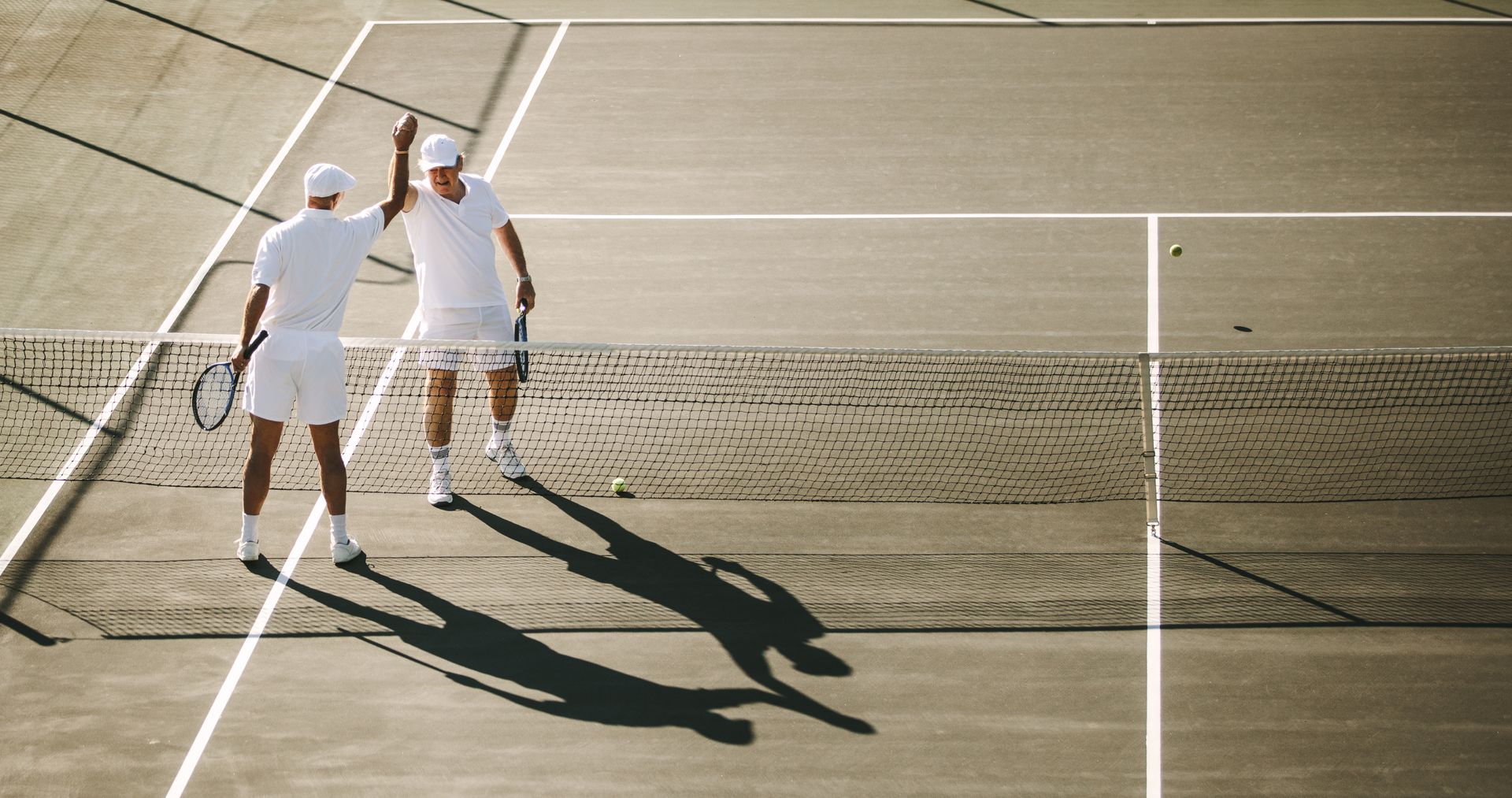
Why Strength Training Is the Ultimate Anti-Ageing Secret (Even Better Than a Ski Pass) Imagine this: you’re in your 70s, skiing in Aspen without worrying about your knees, playing doubles at Kooyong Tennis Club with friends, or golfing on the Mornington Peninsula before heading to lunch. Maybe you’re hiking the Dolomites, or simply enjoying a family trip to Noosa or a relaxed summer’s day in Portsea - and you’re doing it all with energy, confidence, and ease. It might sound like a dream, but for many Hawthorn locals, it’s completely achievable. The secret? Strength training. At CGPT in Hawthorn, we believe ageing doesn’t have to mean slowing down. In fact, with the right training, your 60s, 70s, and beyond can be your most adventurous decades yet. Breaking the Myth: Ageing ≠ Slowing Down Yes, muscle mass and bone density naturally decline with age, but that doesn’t mean you’re destined to give up the things you love. Science shows strength training helps preserve - and even rebuild - what time tries to take away. That means: · Better balance for tennis or hiking uneven terrain. · Stronger bones for skiing or golf swings without fear of injury. · More energy for full days sightseeing on holiday or keeping up with grandchildren. The truth is, ageing is an opportunity - not a limitation. It’s about training smarter, protecting your body, and unlocking strength you didn’t know you had. Strength Training: The Lifestyle Multiplier Think of strength training as your membership card to an active lifestyle. It doesn’t just keep you fit for the gym, it enhances every activity you love. · Golf - Building core and hip strength improves swing power, while balance exercises reduce strain and risk of injury. · Tennis - Whether at Hawthorn Tennis Club or a competitive set at Kooyong, strength training sharpens reaction time and protects shoulders and knees. · Skiing - Strong glutes, quads, and core muscles mean longer days on the slopes without fatigue or falls. · Travel - From carrying luggage through airports to full days exploring cobbled streets in Europe, strength training makes every step easier. The common thread? A stronger body gives you the stamina and resilience to live the life you want, not just watch from the sidelines. The Energy Factor: Why Strength Training Beats “Taking It Easy” Some people think they should slow down to preserve energy. The reality? The less you move, the less energy your body produces. Strength training reverses that cycle, boosting your metabolism and giving you the endurance to go all day. Our clients often tell us that after a few months of training, they’re no longer wiped out by a day trip to Portsea, or too tired to play a full 18 holes. Instead, they’re keeping up with family on trips to Noosa and feeling younger than they have in years. Safe, Effective Training for Every Stage of Life At CGPT, we don’t believe in one-size-fits-all training. Our trainer create programs tailored to your body, your goals, and your lifestyle. For seniors, that often includes: · Sit-to-Stands & Step-Ups – Builds leg strength for stairs, hikes, and tennis footwork. · Seated Rows & Band Pull-Aparts – Supports posture for golf swings or long-haul flights. · Farmer’s Carries – Trains grip and core strength for luggage, shopping, or carrying grandkids. · Glute Bridges & Deadlifts (light to moderate) – Strengthens hips and back for skiing and everyday resilience. Every exercise is designed to translate directly to the activities you love. Meet the Trainers Who’ll Keep You Strong for Life The CGPT team brings diverse expertise - all united by one goal: keeping you strong, fit, and adventurous for decades to come. · Andrea Baylis – Owner and lead trainer, Andrea is known for her balanced, smart, and personalised approach. She excels at empowering women and guiding clients through every stage of life with empathy and care. · James Shaw – With his background in sport science, James brings a fun and goal-driven style. He’s especially skilled in making training enjoyable, helping clients regain confidence after injury, and connecting strength work to real-life activities. · Laurence LaRosa – Laurence’s technical, physiotherapy-informed approach ensures every move is safe, effective, and tailored. Perfect for those looking to protect joints and build strength for tennis, golf, or skiing. · Mia Parsons – A hybrid trainer with a background in basketball and boxing, Mia brings athletic energy and variety. She’s ideal for clients wanting agility, coordination, and resilience for fast-paced sports like tennis. · Sophie O’Donoghue – Adaptable and empowering, Sophie specialises in functional strength that makes everyday life easier. She’s especially supportive for those building confidence later in life. · Tim Walker – Tim is all about strength and transformation, with a detailed yet adaptable style. He’s passionate about helping clients at any age discover just how much stronger they can become. Local, Personal, and Community-Focused What sets CGPT apart isn’t just the training - it’s the community. Our private Hawthorn studio means no crowded classes, no waiting for equipment, and no cookie-cutter programs. Just expert guidance in a supportive space, minutes from the places you already know and love: Kooyong Tennis Club, Hawthorn Tennis Club, Royal South Yarra Tennis Club, Fairview Park, Glenferrie Road cafés, Central Gardens (aka The Rocket Park), Grace Park and beyond. Your Next Decade Starts Now Whether your goals include skiing in Aspen, hitting your best serve at Kooyong, travelling the Dolomites, or simply enjoying family trips to Noosa without worrying about fatigue, strength training is the ultimate anti-ageing tool. It’s not about turning back the clock. It’s about giving yourself the strength, confidence, and vitality to make the years ahead your most adventurous yet. Email Andrea today at andrea@chrisgympt.com to find out how CGPT can create a program tailored to your lifestyle and goals. Because the ultimate secret isn’t just staying alive longer, it’s staying strong enough to live fully.

Lifting for Two (Soon): The Science-Backed Strength Training Blueprint for Women Preparing for Pregnancy Preparing for pregnancy isn’t only about timing and nutrition - it’s also about strength, stability, and resilience. Long before a baby bump appears, the body begins its journey toward supporting new life, and building a foundation of muscle and mobility can make every stage of that journey smoother. At CGPT in Hawthorn, we regularly work with women who are planning to start a family and want to feel physically prepared for pregnancy, birth, and recovery. Strength training before conception helps build a stronger, more adaptable body - one that can better support hormonal changes, postural shifts, and the physical demands of pregnancy. Whether you’re a first-time mum-to-be or already have children and are planning another, this is your opportunity to lay the groundwork for strength, confidence, and wellbeing that lasts far beyond the baby years. Why Pre-Pregnancy Strength Training in Important Pregnancy is often described as one of the most physically demanding periods in a woman’s life. Research from the University of Queensland (Davenport et al., 2019) found that women who enter pregnancy with higher baseline strength and fitness experience fewer musculoskeletal issues, less fatigue, and improved outcomes in labour and postpartum recovery. Strength training before conception is about pre-habilitation - preparing your body to handle change. By strengthening key muscle groups (particularly the core, glutes, and back), you’re giving your body the tools it needs to support a growing belly, shifting posture, and increased load on the spine and hips. It’s also about building a relationship with movement that feels sustainable. When training is part of your lifestyle before conception, it becomes easier to adapt and continue safely throughout pregnancy and beyond. Building the Foundation: Core, Glutes, and Back While no two pre-pregnancy programs look the same, research consistently highlights the importance of strengthening the posterior chain - the muscles that stabilise and support the spine, pelvis, and hips. A strong core is more than visible abdominal tone; it’s the deep stabilising muscles that support internal organs and maintain pelvic alignment. Studies from Monash University (Smith et al., 2020) demonstrate that women with stronger deep core engagement experience fewer lower-back issues during pregnancy and a smoother transition into postpartum recovery. The glutes act as key stabilisers for the pelvis, and strong glutes help reduce strain on the lower back and hips as weight shifts forward during pregnancy. They also support balance, posture, and efficient movement - all vital as the centre of gravity changes. The upper and mid-back play an equally important role. As the chest expands and posture shifts, strong back muscles help prevent rounding through the shoulders and keep breathing mechanics more efficient. At CGPT, we focus on functional strength - movement patterns that translate to real life. That means exercises that help you move better, not just lift heavier. Mobility and Pelvic Floor Preparation Strength without mobility can create tension; mobility without strength can create instability. Pre-pregnancy training should combine both. Gentle hip, thoracic spine, and ankle mobility work prepares the body to move freely through the changing ranges required during pregnancy. Mobility also aids circulation, helps regulate stress, and reduces stiffness from sedentary work or long commutes - factors often underestimated in fertility and pre-natal health. Pelvic floor preparation is equally crucial. Research from the University of Melbourne’s Centre for Women’s Health (Hagen et al., 2021) highlights that pelvic floor conditioning before pregnancy significantly reduces the risk of incontinence and pelvic pain later on. Strength training that integrates breathwork and controlled core activation teaches body awareness - helping women understand how to engage and release pelvic muscles effectively. This awareness becomes invaluable during pregnancy, labour, and postpartum recovery. Balancing Intensity and Hormonal Health Many women worry about training “too hard” while trying to conceive - and it’s a valid concern. Overtraining can elevate cortisol levels and, in some cases, impact menstrual regularity. However, consistent, moderate strength training supports hormonal balance rather than disrupting it. A 2022 review by the Australian Institute of Sport (AIS) found that resistance exercise improved insulin sensitivity and reduced chronic inflammation - both key markers for reproductive health. Additionally, The American College of Obstetricians and Gynecologists (ACOG, 2020) supports strength training as a safe and beneficial practice for women preparing for pregnancy, provided it’s well-structured and supervised. The goal isn’t perfection or exhaustion; it’s consistency and confidence. A tailored program allows for progressive overload without tipping into fatigue. That’s where professional guidance makes all the difference - ensuring the balance between training hard enough to build strength, but not so hard that recovery or fertility is compromised. Nutrition and Recovery: Fuel for Fertility Nutrition is another pillar of pre-pregnancy preparation. Adequate protein, healthy fats, and micronutrients such as iron, zinc, folate, and magnesium are essential for hormone production and egg quality. A 2021 study from Deakin University found that women who combined resistance training with balanced macronutrient intake reported higher energy levels and improved menstrual regularity within 12 weeks - indicators of a healthier hormonal environment. Recovery is equally important. Sleep, hydration, and stress management all influence fertility. Strength training actually supports these systems by improving sleep quality (Kovacevic et al., 2018) and reducing cortisol through structured physical exertion. At CGPT, we take a holistic view of fitness - recognising that recovery, nutrition, and emotional wellbeing all contribute to long-term progress. Mindset: Strength as Self-Care The months leading up to pregnancy can be filled with uncertainty and mixed emotions. Strength training offers a powerful sense of control and self-confidence during this time. Lifting weights teaches patience, trust in your body, and the value of steady progress - qualities that mirror the mindset needed for motherhood. It also provides an outlet for stress and anxiety, releasing endorphins that help regulate mood and promote optimism. When you train for strength, you’re not just preparing your body; you’re preparing your mindset. That resilience will serve you through pregnancy, birth, and every sleepless night that follows. Why Choose CGPT as Your Training Partner CGPT is more than a gym - it’s a private training space designed for personal connection, safety, and support. For women preparing for pregnancy, that means individualised care and an environment where questions are welcomed and progress is celebrated. Our trainers bring years of experience in strength training, pre- and post-natal conditioning, and injury prevention. Each program is designed around your unique physiology, goals, and stage of life - whether you’re looking to enhance fertility, build confidence before conception, or simply future-proof your body for the physical demands of pregnancy. At CGPT, we believe that every woman deserves to feel capable and empowered in her training. Our approach blends evidence-based programming with a genuinely supportive atmosphere that welcomes women of all ages, fitness levels, and life stages. You’ll never feel rushed, crowded, or out of place. Instead, you’ll train in a calm, private setting where every detail is tailored to help you thrive - before, during, and after pregnancy. The Long View: Training Beyond Conception A strong pre-pregnancy foundation creates a smoother transition into prenatal exercise. Women who enter pregnancy with established strength and mobility adapt more easily to the physical changes that come later. Studies from Queensland University of Technology (Wallace et al., 2022) show that women who engaged in regular resistance exercise before conception maintained higher physical activity levels throughout pregnancy compared to those who started after becoming pregnant. This continuity supports both maternal health and foetal development. Once pregnancy begins, training typically shifts toward maintaining strength, mobility, and circulation - rather than building new intensity. But the confidence and body awareness gained in pre-pregnancy training often make those adjustments feel natural and empowering rather than restrictive. The CGPT Difference: A Supportive Space for Every Stage No matter where you’re at on your fertility journey - considering pregnancy, actively trying, or already expecting - CGPT provides a safe, supportive, and professional environment to guide you through it. Our team understands that strength looks different for everyone. Some clients want to feel powerful and energised; others want to manage back pain, improve posture, or simply maintain consistency during life’s transitions. At CGPT, every goal is valid and every journey is respected. The combination of scientific understanding, personalised programming, and a genuinely friendly culture makes it easy to stay committed and confident at every stage. Final Thoughts Strength training before pregnancy isn’t about perfection - it’s about preparation. Building muscle, improving mobility, and supporting hormonal health create a foundation for a stronger, more comfortable, and more confident pregnancy experience. At CGPT, we help women lift for the life they want - not just for a season, but for the years to come. Whether you’re six months or six weeks away from trying to conceive, now is the perfect time to start. Email Andrea today at andrea@chrisgympt.com to begin your pre-pregnancy strength program. References · Australian Institute of Sport (AIS) 2022, Women’s Health in Sport: Resistance Exercise and Hormonal Balance, Canberra. · Davenport, MH et al. 2019, Impact of physical activity on pregnancy outcomes, British Journal of Sports Medicine, 53(14), pp. 885–894. · Deakin University 2021, Nutrition, resistance training, and menstrual health in pre-pregnancy women, Journal of Women’s Health and Nutrition, 30(5), pp. 321–329. · Hagen, S et al. 2021, Pelvic floor muscle training before and during pregnancy: outcomes for urinary incontinence, BMC Women’s Health, 21(1), 412. · Kovacevic, A et al. 2018, Resistance exercise and sleep quality: a systematic review, Sleep Medicine Reviews, 38, pp. 70–80. · Monash University 2020, Core stability and pregnancy-related back pain prevention, Australian Journal of Physiotherapy, 66(2), pp. 101–109. · Smith, J et al. 2020, Core muscle function and pregnancy outcomes, Monash Women’s Health Research Centre, Melbourne. · Wallace, L et al. 2022, Pre-conception physical activity and pregnancy adaptation, Women’s Health Reports, 3(1), pp. 22–30. · The American College of Obstetricians and Gynecologists (ACOG) 2020, Physical Activity and Exercise Before and During Pregnancy, Washington, D.C.
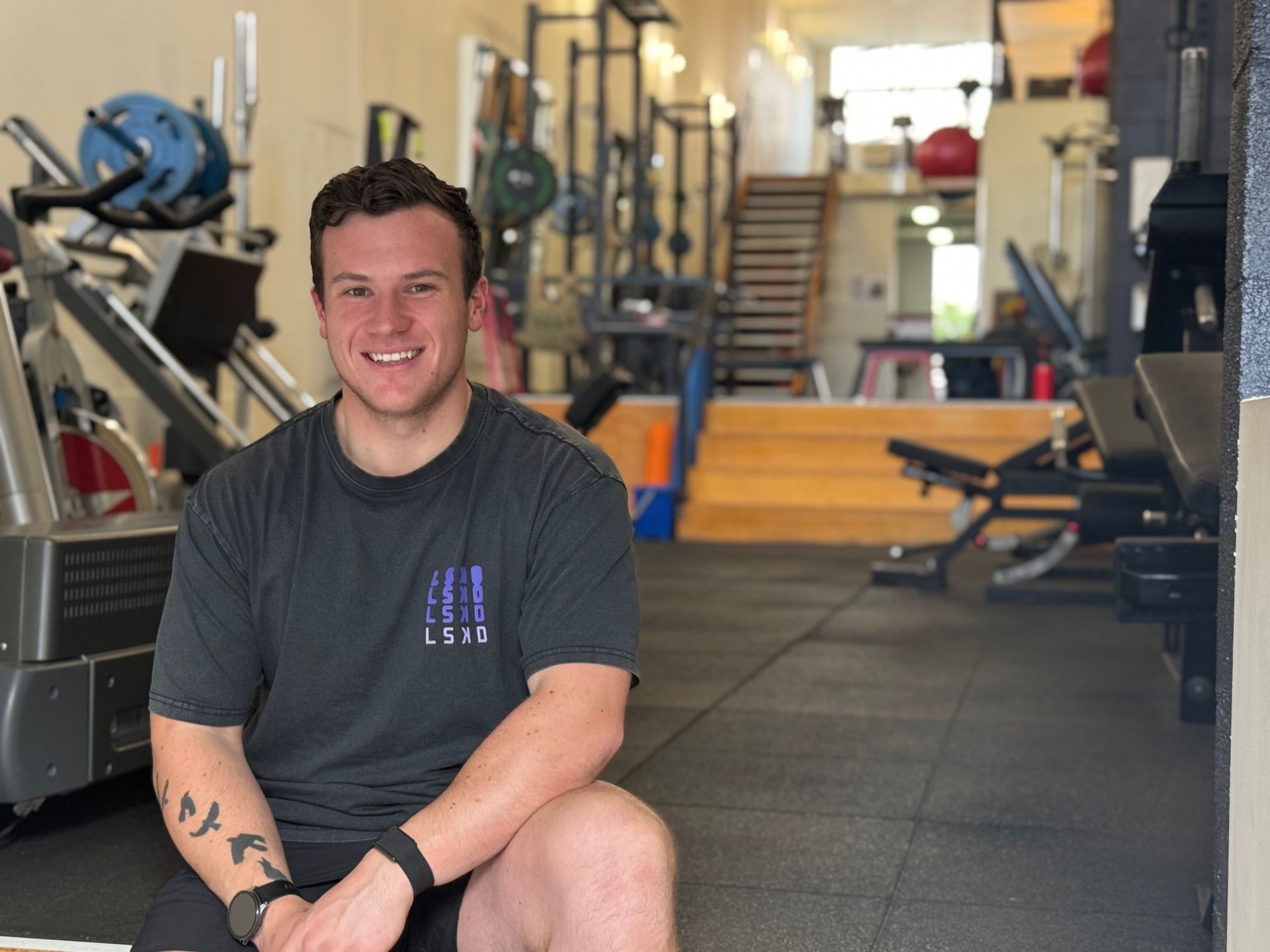
Meet Miles Stukenborg: The Adaptable and Supportive Trainer at CGPT At CGPT in Hawthorn, personal trainer Miles Stukenborg brings a fresh mix of education, empathy, and adaptability to the gym floor. With a background in Exercise Sport Science and years of experience coaching both in and outside the gym, Miles is passionate about helping people discover that nothing is impossible when you back yourself. His approach blends technical knowledge with genuine care, making every client feel seen, supported, and motivated to push forward. From Coaching to Personal Training: A Natural Progression Miles’ journey into personal training began with his love for coaching. A former junior baseball coach at his local club, he quickly discovered the impact he could have on people’s confidence and development. “The turning point for me was realising how much influence I had on people in the gym environment and taking every opportunity to teach and educate in an area I love,” Miles recalls. That passion only grew during 2020, when he started an Instagram page sharing home workouts. His posts inspired peers to stay active through lockdown - with one reaching out later to thank him for sparking a life-changing fitness journey. This deep sense of purpose continues to fuel Miles’ work at CGPT, where his focus is always on helping clients feel stronger, healthier, and more capable in everyday life. A Training Style Built on Flexibility and Education If Miles had to sum up his training style in three words, they’d be fruit salad, education, and fair . · Fruit salad because, as he puts it, “everyone is different with what they want to achieve.” No two clients are the same, so his programming adapts to meet unique needs and goals. · Education because he believes in teaching clients the “why” behind every exercise - not just showing them how to move but giving them knowledge they can use (and even pass on to others). · Fair because he knows life throws curveballs. He listens, adjusts, and supports clients through the ups and downs, scaling sessions to suit their energy and circumstances. General Health as the Foundation Miles’ favourite type of workout to teach isn’t limited to one discipline. Instead, he thrives on all-round general health programming, tapping into strength, endurance, mobility, and lifestyle factors. This holistic approach helps clients of all levels improve their quality of life while keeping training enjoyable and sustainable. Whether it’s a beginner learning to squat or an experienced client building consistency, Miles ensures every person feels empowered. “Believing in clients is the strongest tool,” he explains. “If you know they can achieve something, they’ll believe it too - and then they’ll achieve it.” Transformations That Go Beyond the Gym For Miles, the most rewarding part of being a personal trainer is witnessing how fitness changes lives, not just bodies. One of his most memorable experiences wasn’t even a paying client but a peer from school. Inspired by Miles’ lockdown workouts, this peer completely turned his health around. “He told me my drive and motivation gave him a bar to reach for. If it wasn’t for me, he wouldn’t be in the place he was,” Miles shares. Stories like these remind him why he chose personal training: to help people see what’s possible when they commit to themselves. Life Outside the Gym When Miles isn’t coaching at CGPT, he stays active through a mix of gym sessions, footy, and running festivals along the beach. A long-time outdoors enthusiast thanks to his years in scouts, he also enjoys camping and hiking whenever he can. This love of variety and adventure carries over into his training sessions, where he brings fresh energy and a flexible, inclusive approach. Why Train With Miles at CGPT? Miles Stukenborg is more than just a trainer - he’s a mentor, motivator, and supporter who will back you every step of the way. His mix of Exercise Sport Science knowledge, coaching experience, and people-first mindset makes him a valuable part of the CGPT team. Whether your goal is strength, fitness, or just feeling healthier and more confident, Miles’ adaptable and educational approach will help you build lasting results. Nothing is impossible - it might just be hard. Back yourself, and with Miles by your side, you’ll discover exactly what you’re capable of.

Strong, Fit, and Flexible: How Local Mums Can Carve Out Time for Themselves Without Missing a Moment
Strong, Fit, and Flexible: How Local Mums Can Carve Out Time for Themselves Without Missing a Moment For mums in Hawthorn, mornings can feel like a marathon before 9am - getting the kids dressed, finding lost library books, packing lunches, and racing to school drop-off. The rest of the day often blurs into errands, appointments, and after-school activities. Finding an hour for yourself can sometimes feel impossible. But here’s the truth: strength training doesn’t have to be a luxury, and it’s not “time away” from your family. For local mums, those 60 minutes can be the difference between running on empty and having the energy, confidence, and strength to keep up with everything you love - without feeling worn down in the process. At CGPT in Hawthorn , we see it every day. Mums who thought they didn’t have the time or the energy are now fitter, stronger, and more confident than ever, and they’re doing it in a way that works around their lives - not the other way around. Why Hawthorn Mums Need a Smarter Fitness Solution After childbirth, your body goes through massive changes - physically, hormonally, and mentally. If you’ve read our blog on The Benefits of Strength Training for Women After Childbirth , you already know that building strength helps restore muscle tone, protect your joints, and boost energy levels. Now we take the next step: showing you exactly how Hawthorn mums can make it work in the real world. The good news? You don’t need to spend hours in the gym to see results. In fact, with the right guidance and program, 60 minutes two to three times a week is more than enough to see noticeable changes in strength, mood, and stamina. Fitting It In: How 60 Minutes Can Transform Your Week Think of strength training like a non-negotiable meeting with yourself - one that fits neatly between school drop-off and pick-up. At CGPT, we specialise in efficient, personalised 60-minute sessions that give you everything you need without a second wasted. Some of our local mums book a 9:30am session , right after drop-off, and still have plenty of time for all that needs to be done in a day before pick-up. Others prefer lunchtime slots to break up their day and recharge before the afternoon chaos. Our trainers - including Sophie, Laurence, and Tim - are experts at making sure every minute counts. They tailor your program to your goals, energy levels, and schedule so you leave feeling accomplished, not exhausted. Beyond the Body: The Real Benefits for Mums Strength training isn’t just about looking toned - although that’s a nice bonus. For Hawthorn mums, the benefits go much deeper: · More Energy for Everyday Life – Whether it’s running after a toddler in Fairview Park or carrying sports gear for the kids at Anderson Street Oval, you’ll have the stamina to keep going without feeling drained. · Improved Mood & Mental Health – The combination of endorphins, a sense of achievement, and an hour just for you can help lower stress and lift your mood. · Fewer Aches & Pains – Strengthening the muscles you use every day means less strain on your back, neck, and joints. · Confidence in Your Body – It’s not about “getting your old body back” - it’s about building a strong, capable one for the life you’re living now. Time-Saving Hacks for Busy Mums Making time for strength training is easier when you have a few strategies up your sleeve: · Pre-Pack Your Gym Bag – Keep essentials like a water bottle, sneakers, and a hair tie ready to go. Bonus tip: stash a spare set in the car for those spontaneous “I actually have an hour free and so does my trainer” moments. · Quick Post-Workout Snacks – Protein smoothies, Greek yoghurt with fruit, or a boiled egg with avocado toast will refuel you fast and keep you going until lunch. · Make It Social – want to train 2-on-1 with one of the other school mums? No problem – double sessions are our specialty! Or arrange to meet another mum for a coffee after your session at Axil Coffee Roasters on Burwood Road or Sonny Ray on Auburn Road - from training straight into a treat. Strength Moves for Mum Life Our programs at CGPT focus on functional strength - exercises that make your daily life easier. These aren’t random gym moves; they’re designed to help you lift, carry, bend, and move better in the real world. Some examples you might see in a session: Goblet Squats – Perfect for building the leg and core strength needed for picking up kids or heavy bags. Deadlifts with Dumbbells – Helps protect your back when lifting prams or moving heavy items. Seated Rows – Improves posture and prevents the rounded shoulders that come from hours of holding babies or leaning over laptops. Farmer’s Carries – Trains grip, shoulder, and core strength - basically “carrying everything in from the car in one trip” training. The best part? With Laurence’s focus on technique , Sophie’s supportive coaching style , and Andrea’s knack for creative, effective programming , you’ll always be doing the right moves for your body and goals. Why CGPT Works for Local Mums In a world of overcrowded group classes and impersonal big-box gyms, CGPT offers something different: · Private, Personalised Training – You’re not just another member. Your program is built entirely around you. · Flexible Scheduling – Sessions that fit into the school day without cutting into family time. · Local & Community-Focused – We’re right here in Hawthorn, surrounded by the same parks, cafés, and schools you love. · Expert Coaches Who Understand Your Life Stage – Our trainers know how to adapt workouts for postpartum recovery, time limitations, and real-world functional fitness. It’s Not Indulgence - It’s an Investment Too often, mums feel guilty for taking time for themselves. But here’s the thing: your family benefits when you’re at your best. More energy. Less stress. Better health. Strength training isn’t selfish - it’s essential. Think about it: in just two or three hours a week, you can dramatically improve the way you feel and move, setting the tone for every other hour you spend with your family. Ready to Get Started? If you’re a Hawthorn mum looking for a way to feel stronger, more energised, and more confident - without sacrificing precious time with your family - CGPT is here to make it happen. You don’t need to overhaul your life, buy complicated equipment, or spend hours in the gym. You just need a plan that works for you, a trainer who understands your goals, and a supportive space where you can make it happen. Email Andrea at andrea@chrisgympt.com to find out how we can design a strength program that fits perfectly into your life. Because being strong, fit, and flexible isn’t just for the gym - it’s for every moment you live and love outside of it.
